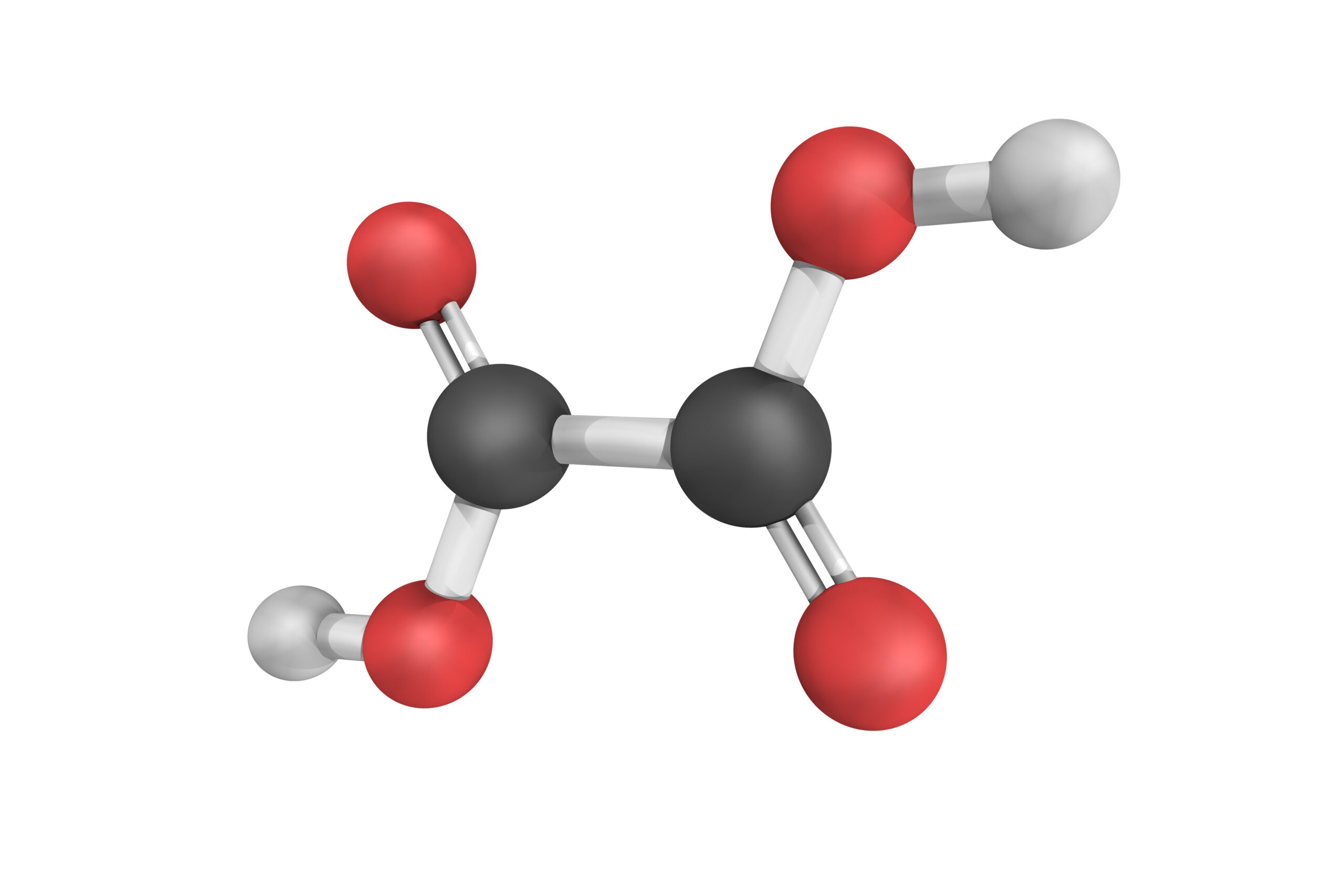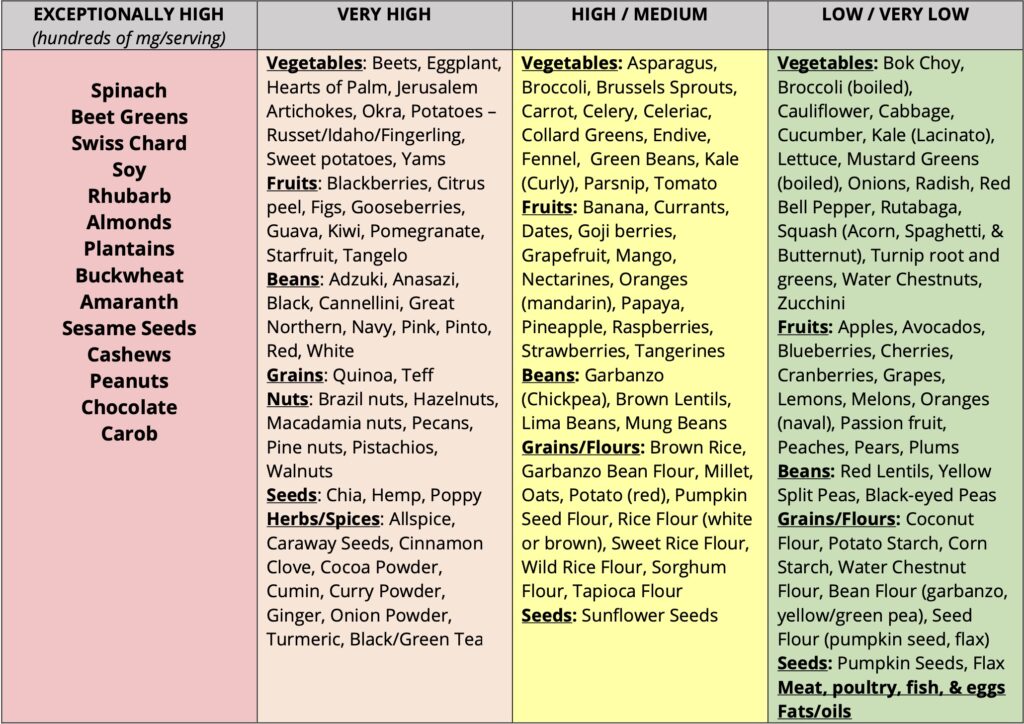Who would have thought that certain healthy foods can actually be problematic for some people? An example of this are plant foods that are high in oxalates. Here is a quick guide to oxalates: what it is, why it is a problem for some people, what the symptoms are are what you can do to help resolve an oxalate issue.
What are oxalates?
Oxalates are naturally-occurring substances found in plants, animals, and in humans. The human body naturally generates oxalates and we also get oxalates by eating plant-based foods which contain them.
Why are oxalates a problem for some people?
Oxalates are ANTI-NUTRIENTS which can bind with minerals such as calcium, magnesium, and iron in your food and prevent their absorption in the body.
In a healthy individuals, moderate quantities of oxalates shouldn’t be an issue. However, the following factors can influence the ability of the body to handle oxalates:
- Overconsumptions of High Oxalate Foods: This would include many “healthy” foods like spinach, plantains, almonds, and chia seeds.
- Antibiotic Use: These medications kill the primary bacteria species (Oxalobacter formigenes) responsible for degrading oxalates.
- Dysbiosis: There are not enough beneficial bacteria in the gut to break down oxalates.
- Yeast/Fungal Overgrowth: Candida produces oxalates and converts collagen to oxalates.
- Micronutrient Deficiencies: Vitamin B1 and B6 deficiencies will make the body generate more oxalates; calcium and magnesium are necessary to bind to oxalates so they are excreted in the stool instead of being absorbed.
- Fat Malabsorption: Excess fat binds to calcium, so calcium isn’t available to bind with oxalates, leaving oxalates free to get into the blood and tissues.
- Leaky Gut & Gut Inflammation: A leaky gut allows oxalates to get into the bloodstream, and an inflamed gut greatly increases absorption of oxalates.
- Genetic Defects: Some people have less of an ability to handle oxalates.
Symptoms of excess oxalates
Oxalates can bind with calcium and other minerals to form crystals with razor sharp, knife-like edges. Because these crystals are like tiny shards of jagged glass, they are extremely irritating and painful to tissues where they cause or increase inflammation. Oxalates can affect every system of the body.
- Pain (anywhere) [especially urinary, genital (vulvodynia), joints, muscles, eyes, head, & intestines]
- Painful or inflamed joints and muscles (similar to Fibromyalgia or arthritis)
- Fatigue
- Insomnia
- Gas and bloating
- Low bone density
- Frequent urination, urinary pain, Interstitial Cystitis
- Cloudy urine, crystals in urine, or sandy stools
- Kidney Stones
- Headaches, Depression, Anxiety, Brain Fog
- Yeast (Candida) Overgrowth
- Rashes & Hives
- Blood sugar imbalances
- Burning Feet
What to do if oxalates are a problem for you?
- Adopt a low oxalate diet.
- Investigate if genetics play a role.
- Heal the gut barrier.
- Restore the gut microbiome.
- Support fat digestion if required.
- Strategic use of supplements to restore nutrient deficiencies and help with “mopping up” excess oxalates in the gut.
Low oxalate diet
A Low Oxalate Diet typically consists of mostly LOW oxalate foods with a few MEDIUM or HIGH oxalate foods. The goal is to try to keep the oxalate content of each meal to approximately 7-10 mg of oxalates. Aim to consume a maximum of 40 mg to 60 mg total oxalates for the day.
- AVOID foods containing “EXCEPTIONALLY HIGH” or “VERY HIGH” amounts of oxalates.
- LIMIT foods containing “MEDIUM” or “HIGH” amounts of oxalates. MINIMIZE PORTION SIZES (eat 1⁄4 cup of a medium oxalate food instead of 1⁄2 cup) and COOK (boil and discard the water) to lower oxalates.
- EAT foods containing “VERY LOW” or “LOW” amounts of oxalates.
- A food’s oxalate content is DECREASED through BOILING and SOAKING; the soluble oxalates are discarded when you dump the water. [NOTE: While soaking and boiling can reduce the oxalate levels in food to a point, it is not sufficient enough to make the “exceptionally high” oxalate foods – like spinach – safe to consume].
- IT IS IMPORTANT TO REMOVE OXALATES VERY SLOWLY FROM THE DIET. In general, reduce oxalates by 5-10% per week. If you’ve been eating a lot of very high oxalate foods, it may take several weeks to months before you reach a Low Oxalate Diet. Start by continuing to eat high oxalate foods but reduce the serving size. Keep decreasing little by little.
Oxalate Food List
References:
Probiotics and Other Key Determinants of Dietary Oxalate Absorption
Primary and secondary hyperoxaluria: Understanding the enigma



